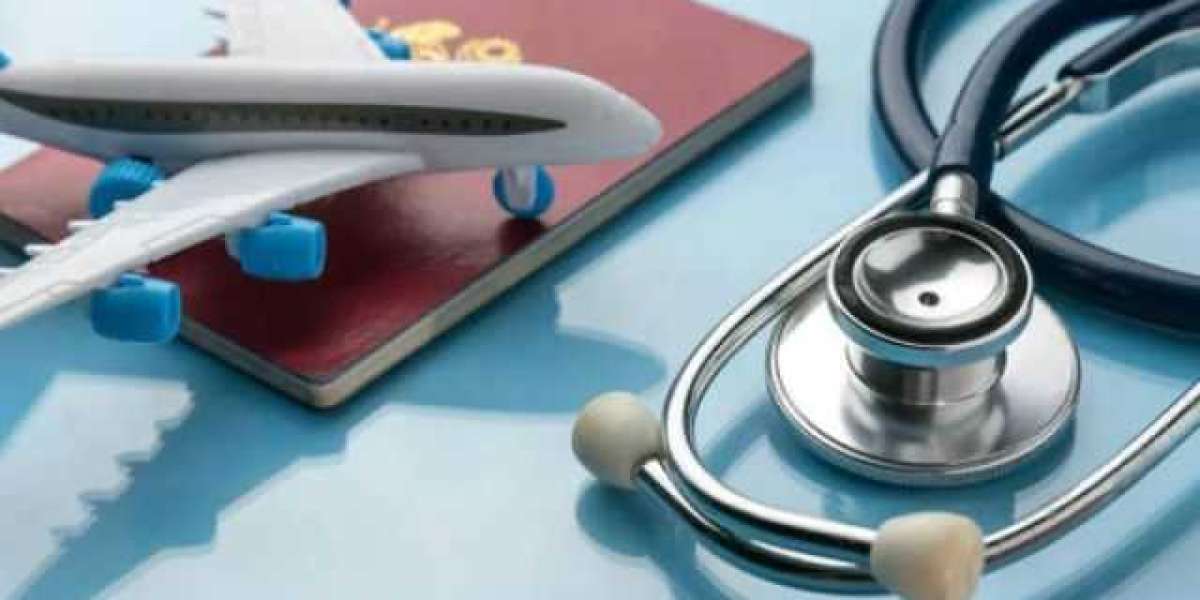As people's attention to health preservation and wellness gradually increases, the international Medical Tourism market is also expanding. Data shows that in 2006, the number of global Medical Tourism visitors was 20 million, and this figure had reached 40 million by 2012. The annual output value of Medical Tourism has reached 100 billion US dollars, with an annual growth rate of about 20%, and it has become the fastest-growing new industry worldwide. All countries attract consumers from all over the world with their distinctive medical resource advantages and have earned huge foreign exchange earnings in return.
Dr. Yang Jinsong from the China Tourism Academy said that Medical Tourism in Asia has done very well. He cited the development of Medical Tourism in India, saying that the revenue of Medical Tourism in India has been increasing at a rate of 15% every year. Although traveling to India gives the impression that public services are not very good, the private clinics in India are quite perfect. Yang Jinsong introduced that the Indian government strongly supports private medical care and offers a considerable number of preferential policies in terms of importing medical equipment, enabling India's medical equipment to be on par with that of major European and American countries. Secondly, Indian physicians have a high degree of internationalization and generally hold internationally recognized physician qualification certifications. In addition, India's Buddhist culture, affordable accommodation and food, etc., have enabled the country's medical industry to enjoy the brand benefits of services from developed countries at third-world prices. According to Yang Jinsong, a coronary artery bypass surgery in the UK costs approximately 19,000 pounds, while in private hospitals in India, it only costs 4,800 pounds. In the United States, an MRI scan costs 700 US dollars, while in India, it only costs 60 US dollars.
Not only that, the plastic surgery industry in South Korea, as well as dental plastic surgery and orthodontics in Thailand and Singapore, all enjoy a high reputation internationally. "Low prices are only one aspect of its competitive advantage. An international Medical service system and well-developed supporting facilities are another important reason for the prosperous Medical Tourism market." " Yang Jinsong said that the Medical Tourism in countries like India, Thailand and Malaysia is relatively developed because they have very complete private medical service systems, and tourists can receive high-quality services in these countries. Some of their doctors were invited from the West or had received medical education there. Furthermore, countries like Thailand and Malaysia have geographical advantages and abundant tourism resources. When tourists go there, it is not about solving difficult problems but rather a semi-convalescent way. Besides, these countries usually have very good hotels, excellent catering and supporting facilities.
- Cell Therapy and Immunotherapy: How Has China's Progress in CAR-T Attracted Patients?
- Why Choose China for Medical Tourism
- Step-by-step guide: Application and experience process for medical tourism in China
- In-Depth Analysis: The Composition of Medical Tourism Costs in China
- Easily Embark on Medical Tourism in China: A Detailed Guide to the Process
- Organ Transplantation/Rare Disease Treatment: Why Has China's Price Advantage in Medical Tourism Become the “Last Resort”?
- Precision Medicine in China: How Genetic Testing/Targeted Therapy Enables Medical Tourism?
- Unraveling Medical Tourism in China: Language, Visa and Follow-Up Services
- International Certification Endorsement: Quality Assurance System for Medical Tourism in China
- International Patient Transportation Service: Emergency Rescue System for Medical Tourism in China
- Exclusive channel for international patients: standardized process of “VIP service” in China's tertiary hospitals
- International Patient Medical Dispute Handling: Dispute Resolution Mechanisms for Medical Tourism in China
- Medical tourism to China: these precautions you should not know
- Chengdu Aidi Eye Hospital
- Chengdu Maria Maternity and Children's Hospital
- Chengdu Angel Maternity Hospital
- Affiliated Hospital of Chengdu University
- Chengdu Women's and Children's Center Hospital
- Chengdu Sixth People's Hospital
- Specialized Treatment for Children: The Price Advantage of Medical Tourism in China
- Chengdu Fifth People's Hospital
- Chengdu No.4 People's Hospital
- The Third People's Hospital of Chengdu
- The Second People's Hospital of Chengdu
- Chengdu Hospital of Integrative Medicine
- Hangzhou Red Cross Hospital
- The Affiliated Hospital of Hangzhou Normal University
- Zhejiang Provincial Hospital of Traditional Chinese Medicine
- Zhejiang Tongde Hospital
- Why are China Medical Tourism's children's myopia correction packages favored by parents?
- Comparison of Private Hospitals in the Middle East: Analysis of the Price Advantages of Chinese Medical Tourism in Cardiovascular Treatment
- The First People's Hospital of Hangzhou
- Sir Run Run Shaw Hospital, School of Medicine, Zhejiang University
- The Second Hospital Affiliated to Zhejiang University School of Medicine
- The First Hospital Affiliated to Zhejiang University School of Medicine
- Zhejiang Provincial People's Hospital
- Comparing Medical Tourism in India: China's “Differentiated Advantage” in Hospital Environment + Price
- Comparing India: China's Technological and Service Advantages in Medical Tourism
- Boao Future Hospital
- China Stem Cell Group's Boao Affiliated Stem Cell Hospital in Hainan
- Ciming Boao International Hospital
- Hainan Shengnuo One Specialist Clinic
- Hainan Boao Lecheng International Medical Tourism Pilot Zone
- Compare Private Hospitals in Singapore: Price and Service Comparison of Chinese Medical Tourism in Obstetrics and Gynecology
- Comparison of medical tourism in Turkey: China's “technology + cost” advantage in assisted reproduction + price
- Boao Lecheng Aier Eye Hospital
- Boao Lefke Medical Center
- Ying Yi International Medical Center
- Hainan Qiyan Hospital
- Boao Evergrande International Hospital
- Boao International Hospital
- Boao Super Chinese Medicine Hospital
- Boao Sino-French Rehabilitation Medicine Center
- Boao Super Hospital
- Comparison of medical tourism in South Africa: China's “globally recognized” advantage in hospital qualification + price
- Comparison of Mexico medical tourism: China in plastic surgery + price “natural effect + pro-people price”
- Comparing US/Japan: How price-competitive is Chinese medical tourism in oncology treatment?
- Comparing Malaysia's Medical Tourism: China's One-Stop Advantage in Hospital Scale + Price
- Comparison of the Canadian medical system: China's medical tourism “short waiting time + low price” double advantages
- Comparison of Korean plastic surgery hospitals: why China's medical tourism “cost-effective + natural results” has become a new favorite?
- Comparison of foreign countries: China's medical tourism price advantage is significant
- How China's cost-effective medical tourism can attract Southeast Asian patients?
- Shenzhen Qianhai Shekou Free Trade Zone Hospital
- Huazhong University of Science and Technology Concordia Shenzhen Hospital
- Luohu District People's Hospital
- The University of Hong Kong Shenzhen Hospital
- Why China's Medical Tourism Full Process Costs Just 1/3 of Japan's
- How China's Medical Tourism Leads the Asian Market?
- Multi-Therapy Options for Medical Tourism in China
- The Attractiveness of Chinese Medical Tourism with Chinese Medicine Characteristics
- Shenzhen Maternal and Child Health Hospital
- Shenzhen Hospital of Traditional Chinese Medicine
- Shenzhen Second People's Hospital
- Early Cancer Screening Packages: Why China's Medical Tourism “Low Cost Precision Screening” Has Become a Global Hot Spot?
- JCI-Accredited Hospitals: Internationalized Service Standards for Medical Tourism in China
- Shenzhen Qianhai Taikang International Hospital
- Shenzhen Sigma Lin Shunchao Eye Hospital
- Women and Children's Medical Center of Guangzhou Medical University
- The Third Affiliated Hospital of Guangzhou Medical University
- The First Affiliated Hospital of Guangzhou Medical University
- The First Affiliated Hospital of Guangzhou University of Traditional Chinese Medicine
- What is the best place for medical tourism in China?
- Do foreigners get free medical care in China?
- How good is health care in China?
- Is China friendly to medical tourists?
- Is Chinese medicine credible?
- Where does China rank in healthcare?
- Is health care in China better than in the US?
- How big is the medical tourism market in China?
- What if a foreigner gets sick in China?
- Can foreigners seek medical treatment in China?
- Are medical tourism conditions good in China?
- How is China's medical tourism system?
- Is there medical tourism in China?
- Zhujiang Hospital of Southern Medical University
- Nanfang Hospital of Southern Medical University
- Sun Yat-sen University Cancer Center
- JCI accredited hospitals China
- China Medical Tourism Visa Application Process
- The best cancer treatment in China
- China medical tourism packages
- Zhongshan Eye Center, Sun Yat-sen University
- Hospital of Stomatology,SunYat-sen University
- Sixth Affiliated Hospital of Sun Yat-sen University
- Third Affiliated Hospital of Sun Yat-sen University
- Is healthcare expensive in China?
- Medical Facilities in China
- Sun Yat-sen Memorial Hospital
- First Affiliated Hospital of Sun Yat-sen University
- Guang'anmen Hospital
- Beijing Tiantan Hospital
- What is the state of health in China?
- Is healthcare in China free?
- Beijing United Family Hospital
- China-Japan Friendship Hospital
- Peking Union Medical College Hospital
- Chengdu
- Hangzhou
- Is medical tourism allowed in China?
- China Medical Tourism Market
- China's Healthcare System
- Smile Surgery for Medical Tourism in China
- Is China's medical care good?
- What are the international medical tourism pioneer zones in China?
- How to choose a medical tourism destination?
- Benefits and Advantages of Medical Tourism
- How to choose a medical tourism agent?
- What to look for when choosing a hospital for medical tourism abroad?
- What are some common misconceptions about medical tourism?
- Hainan
- Beijing
- Shenzhen
- Chinese Medicine Health Care
- Oral Diseases
- Organ Transplantation
- Cardiovascular and Cerebrovascular Disease
- Medical Cosmetology
- IVF Reproductive Assistance
- Cancer Treatment
- Guangzhou
- Shanghai
- Shanghai International Medical Center
- Shanghai Proton Heavy Ion Hospital
- East China Hospital
- Xinhua Hospital Shanghai Jiao Tong University School of Medicine
- Shanghai First Maternity and Infant Health Center
- Shanghai Sixth People's Hospital
- Shanghai Children's Medical Center
- China Welfare International Peace Maternity and Child Health Center
- Longhua Hospital Shanghai University of Traditional Chinese Medicine
- Renji Hospital Shanghai Jiao Tong University School of Medicine
- Zhongshan Hospital Fudan University
- Ruijin Hospital Shanghai Jiao Tong University School of Medicine
- Huashan Hospital of Fudan University
- What is Medical Tourism in China
The Chinese market is in its infancy
Looking at the burgeoning Medical Tourism market abroad, cities in China such as Beijing, Shanghai and Guangzhou have also shown great enthusiasm for Medical Tourism. Medical Tourism services have been successively launched in places like Beidaihe, Hangzhou and Sanya. In 2010, Shanghai launched a Medical Tourism product development and promotion platform, adopting the TPA model that all overseas Medical Tourism companies are applying, officially taking the first step for China to enter the international Medical Tourism market. At the 2013 Boao Forum for Asia, it was announced that Hainan would establish an international Medical Tourism pilot zone in Boao Lecheng. Recently, the Beijing Municipal Commission of Tourism, in collaboration with the Beijing Municipal Administration of Traditional Chinese Medicine, has for the first time launched seven traditional Chinese medicine health preservation tourism products for domestic and overseas tourists. While visiting famous historical sites such as the Great Wall, the Forbidden City, and the Summer Palace, tourists can also visit the Traditional Chinese Medicine Museum, tour the Chinese herbal medicine planting base, enter the famous doctors' clinics in Beijing to taste seasonal health preservation tea, and personally experience traditional Chinese medicine health preservation methods such as acupuncture and massage. According to a relevant official from the Beijing Municipal Commission of Tourism, the development of this traditional Chinese medicine health preservation product will be in line with the target customer group and implement customized service forms. For instance, for urban office workers, mainly stress-relieving products are recommended, with the primary purpose of relaxation and vacation. Targeting the middle-aged and elderly population, it focuses on health preservation products, introducing dietary structures and health preservation knowledge. For female tourists who care about their appearance, the main focus is on introducing to them how traditional Chinese medicine can help with beauty care and health preservation.
Despite numerous attempts in recent years, the domestic Medical Tourism industry has not developed as rapidly as expected. In this relatively new field, Medical Tourism is still more of a concept and has many limitations in terms of scale and significance. In this regard, Yang Jinsong believes that many attempts have not focused on the construction of an international Medical service system, which is precisely the core content of the Medical Tourism industry's market development.



